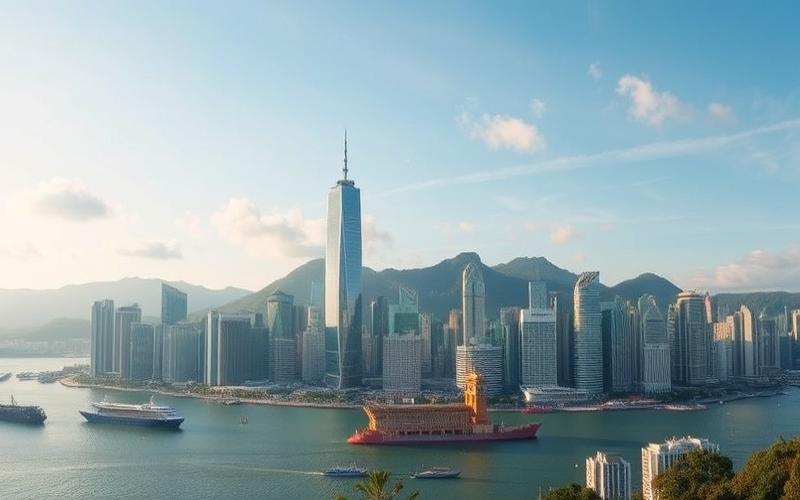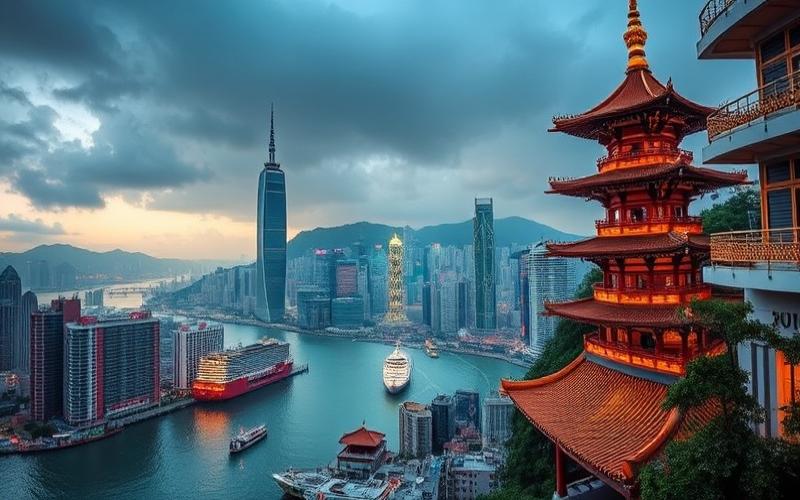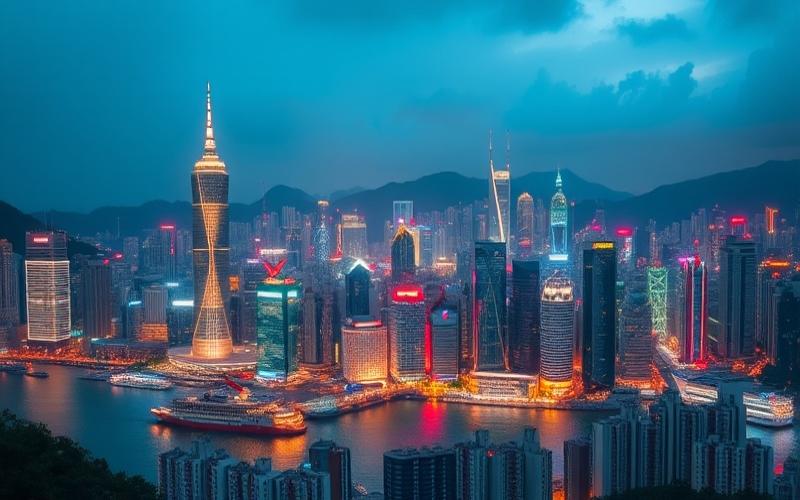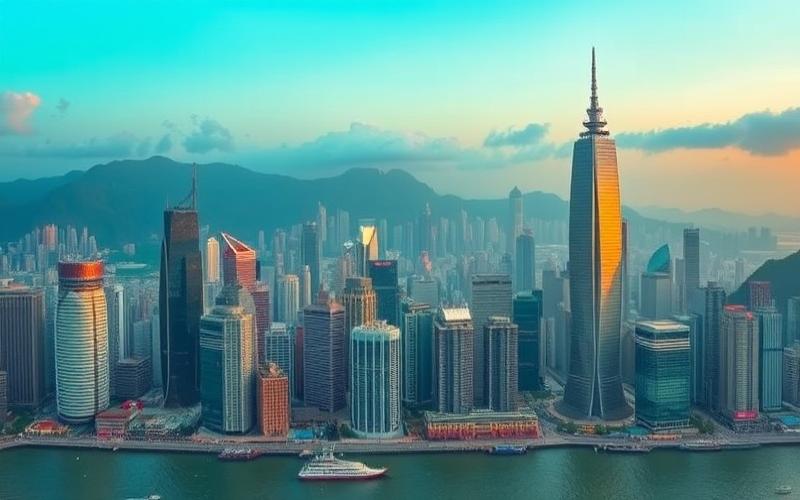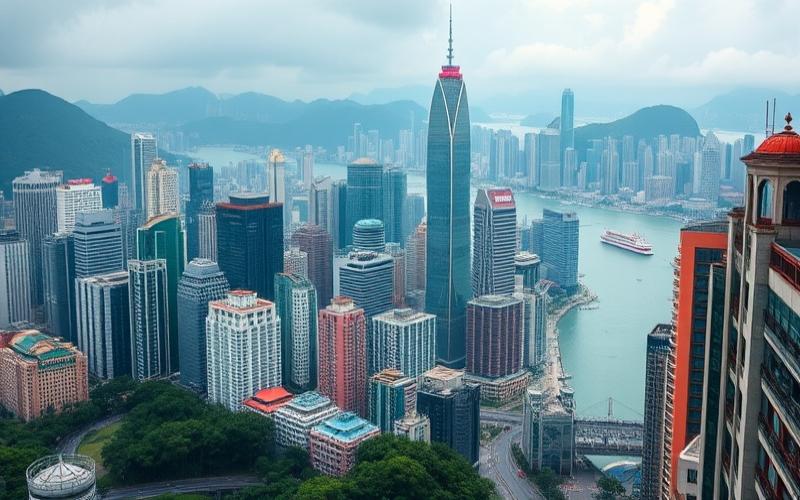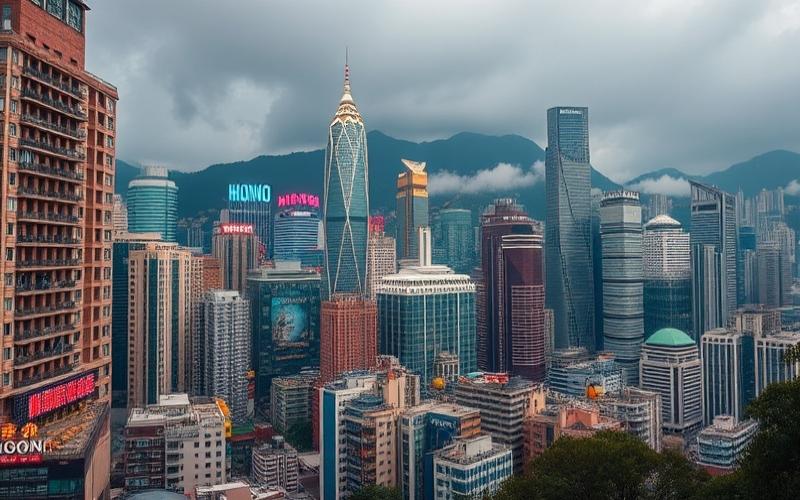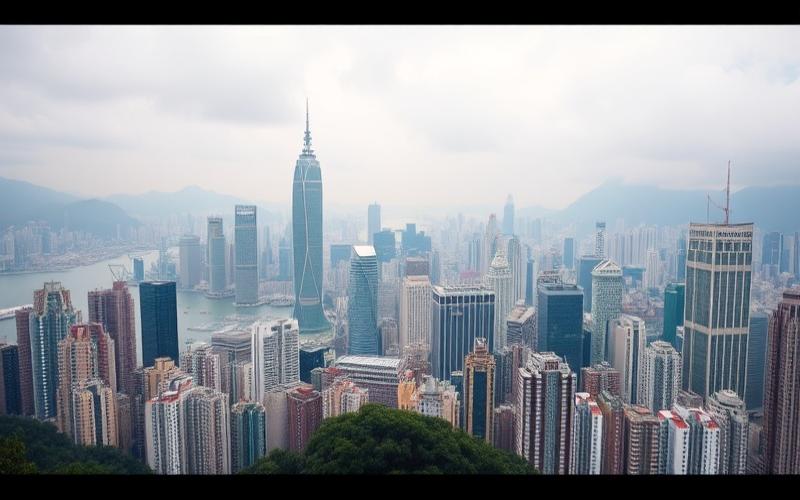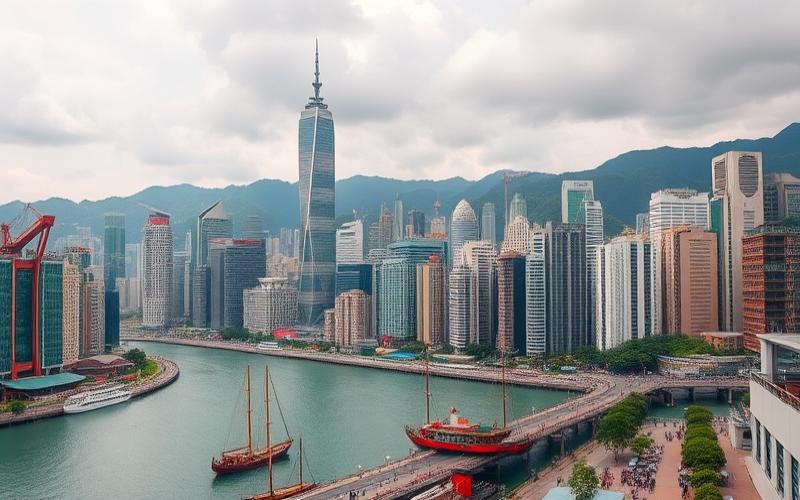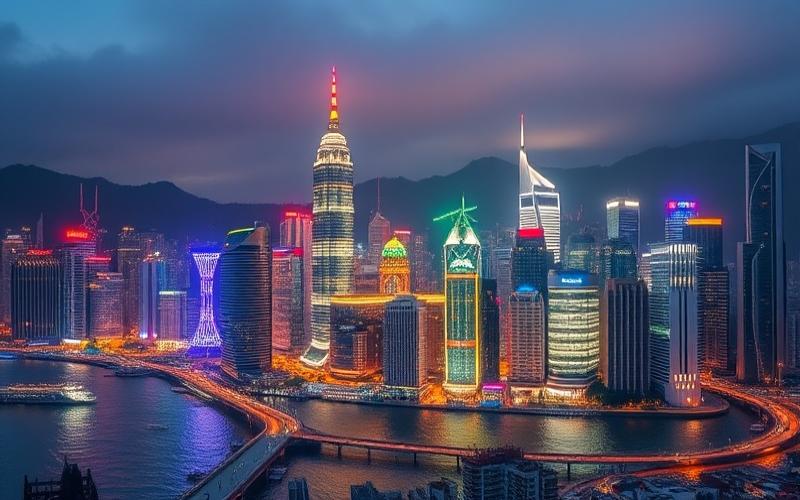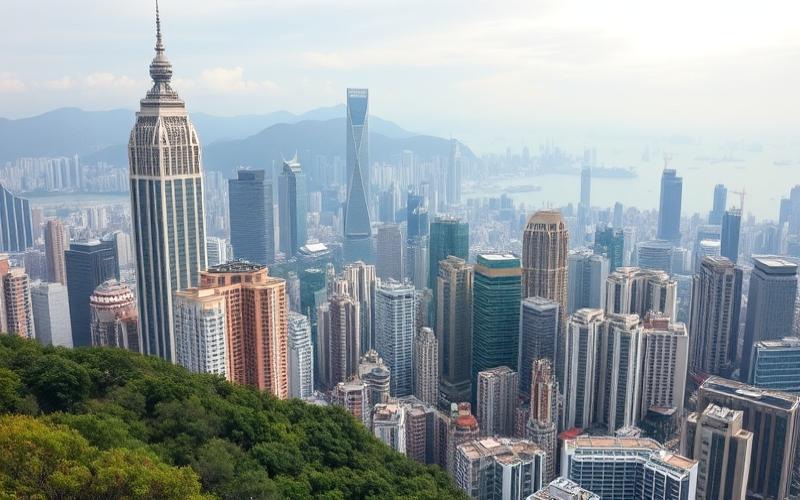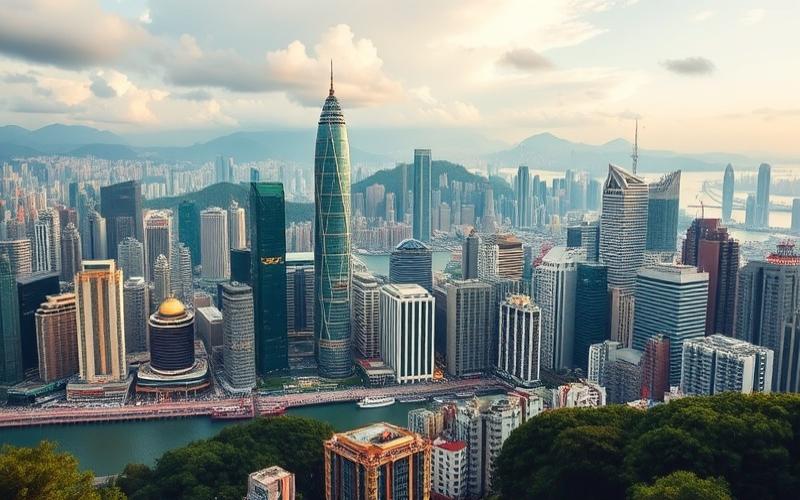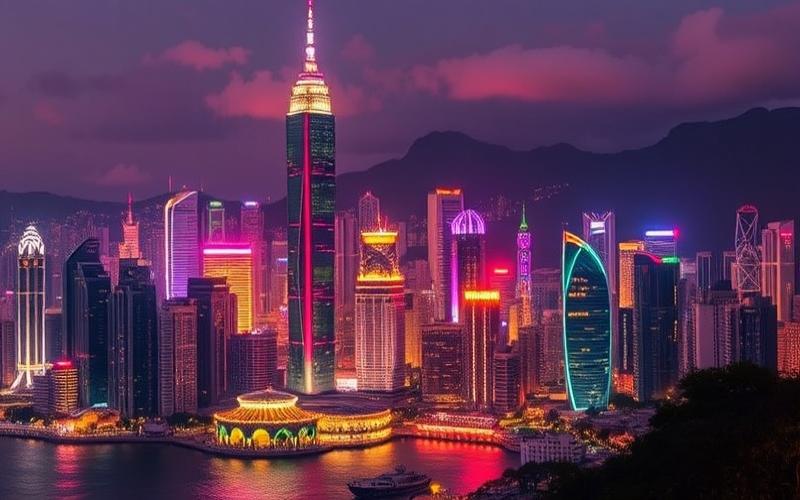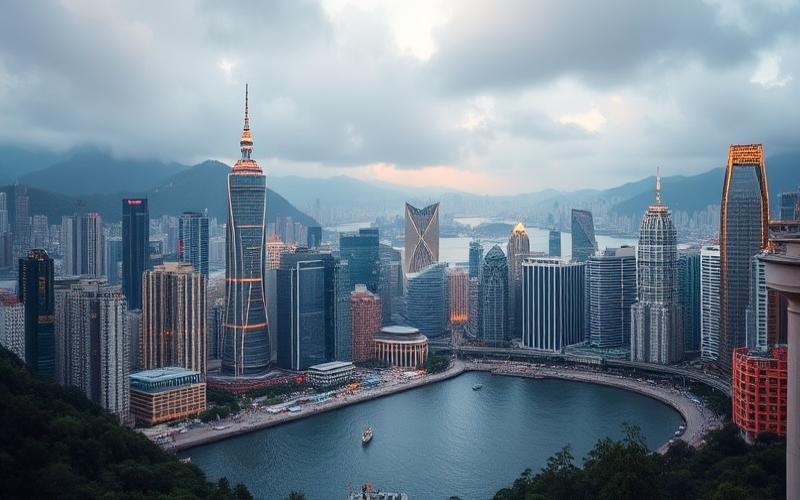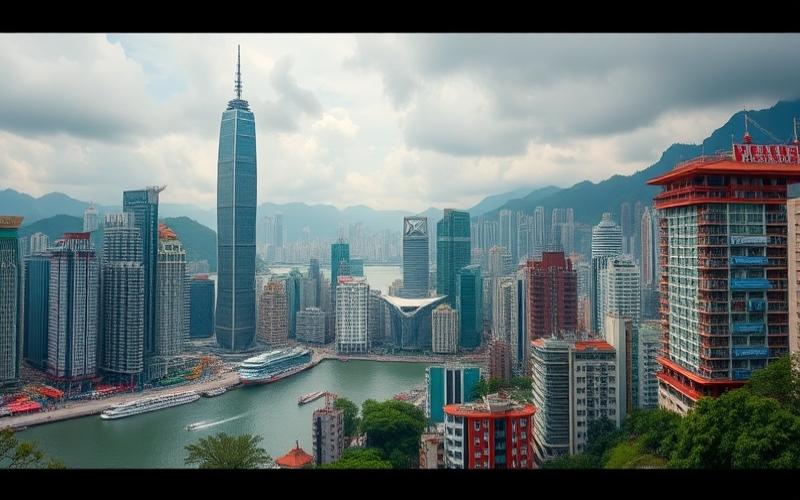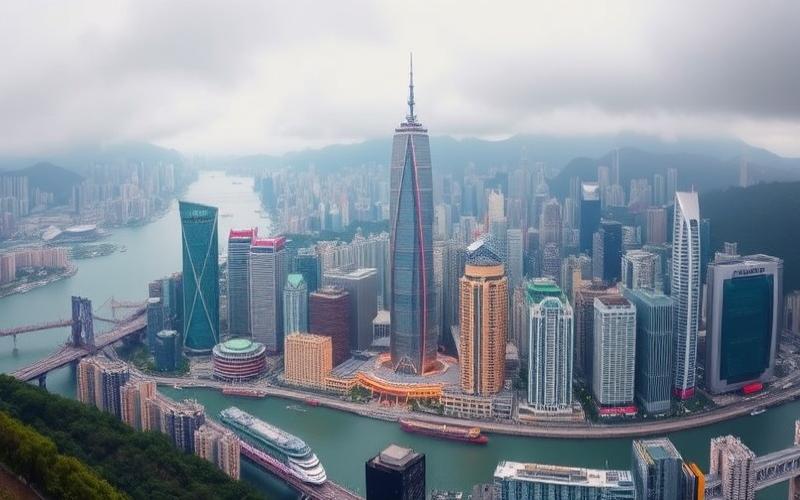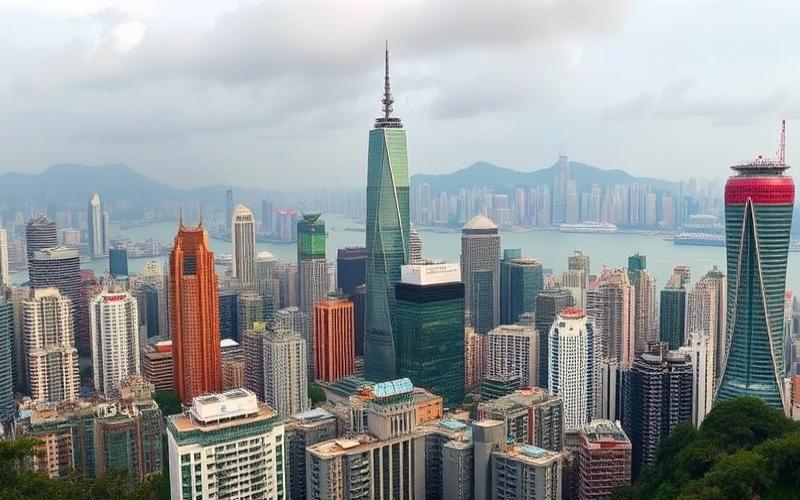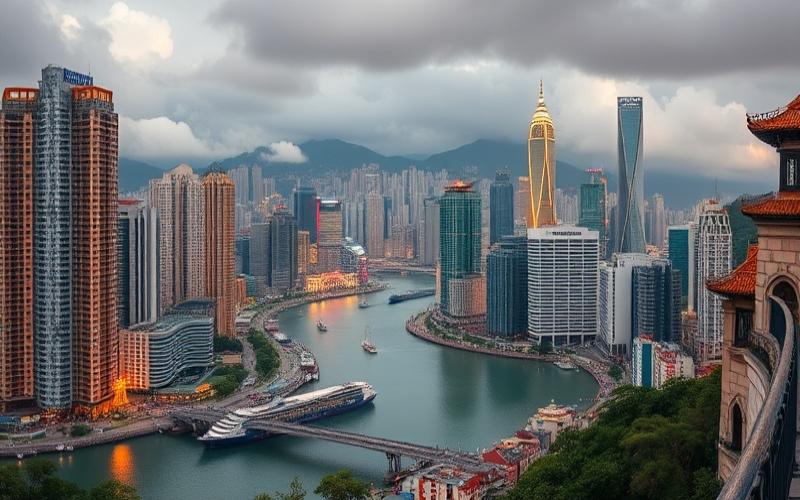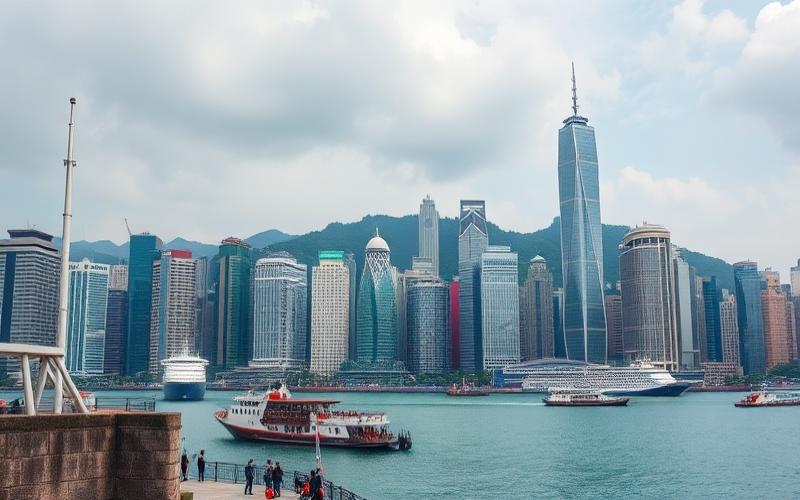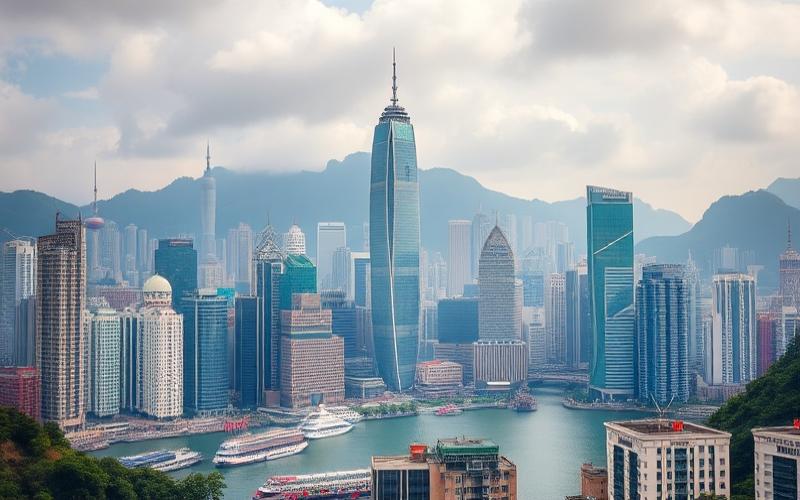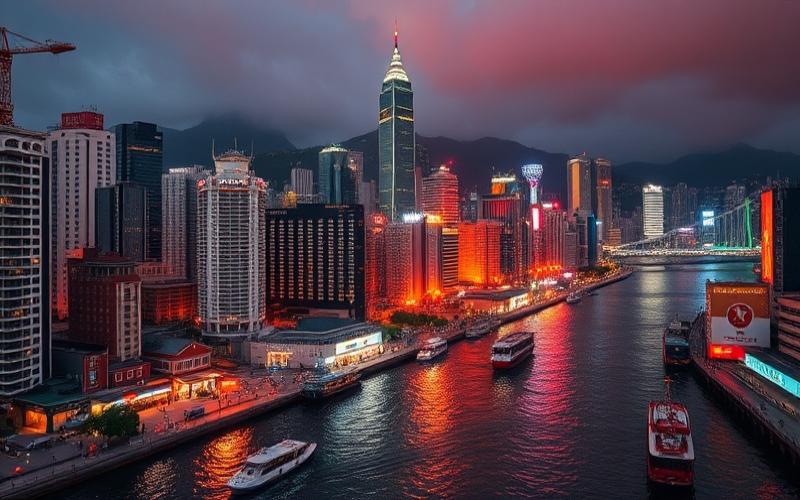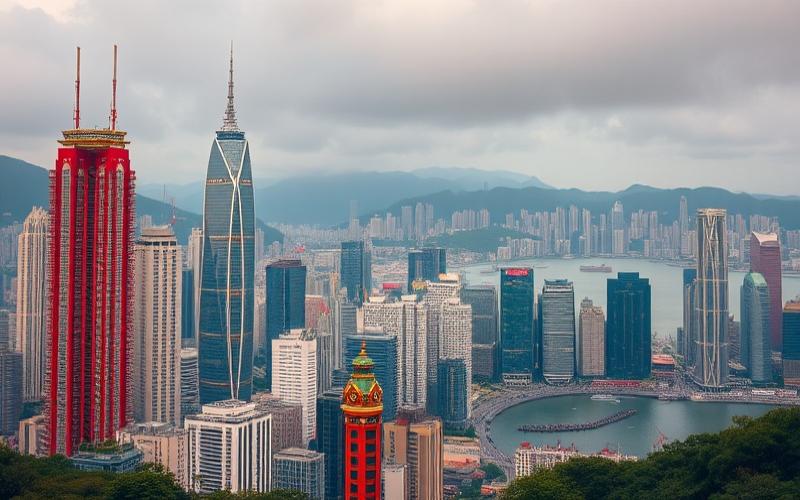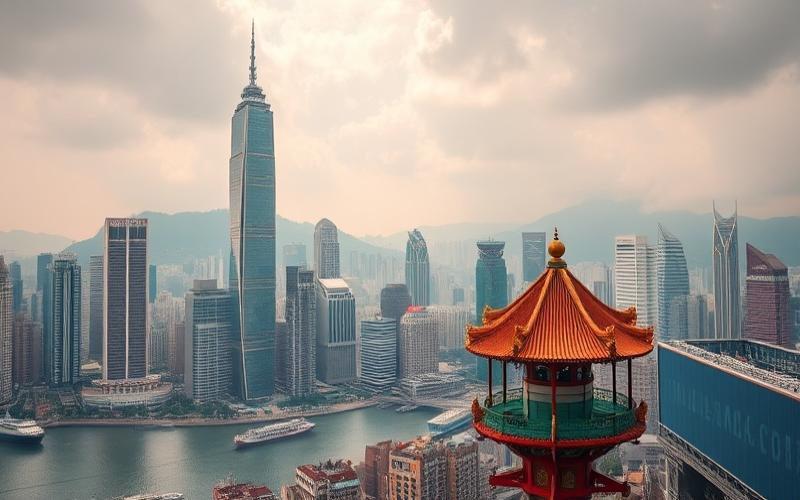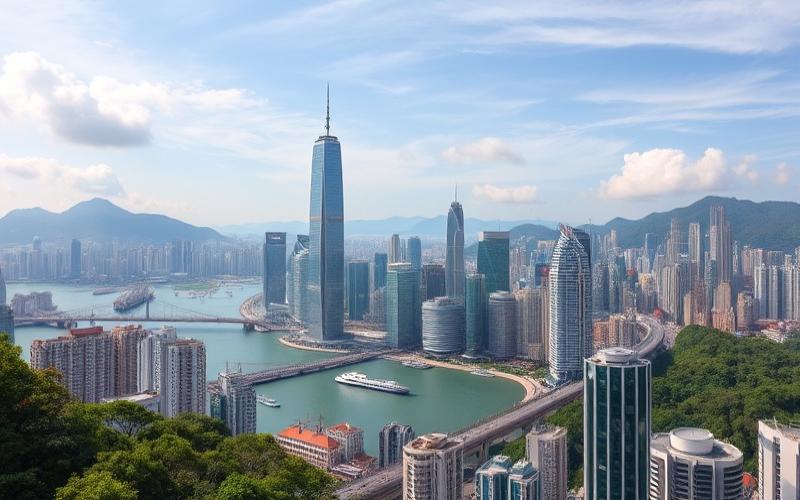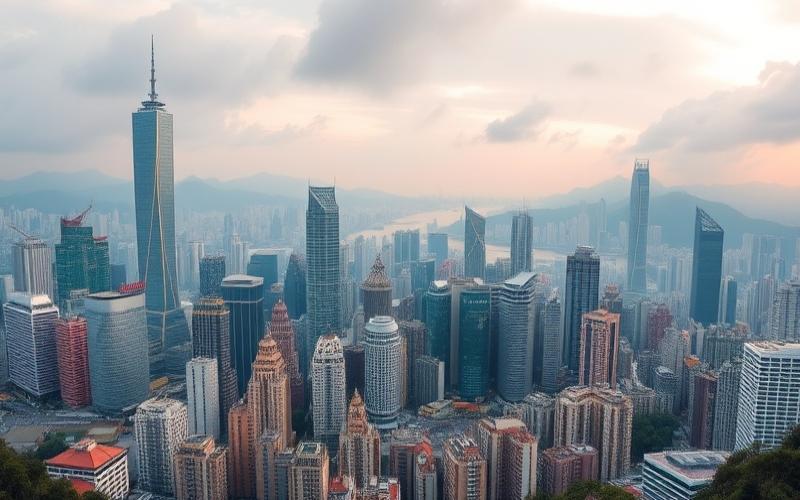
 Published on and written by Cyril Jarnias
Published on and written by Cyril Jarnias
Hong Kong’s Real Estate Market
Renowned as one of the world’s most dynamic and volatile markets, Hong Kong’s real estate sector continues to evolve amid unique economic and political challenges.
The impact of the global pandemic, rising geopolitical tensions, and interest rate fluctuations have led to significant shifts in buying and leasing dynamics.
However, despite these obstacles, demand for luxury properties and high-end commercial spaces remains strong, driven by an affluent local population and sustained interest from international investors.
While government policies attempt to stabilize the sector, emerging trends such as the rise of property technology and increased focus on sustainability are redefining priorities for buyers and developers alike.
In this uncertain landscape, understanding these key factors becomes essential for navigating and thriving in Hong Kong’s complex market.
Good to Know:
Hong Kong remains one of the world’s most expensive real estate markets, with some of the highest prices per square meter.
Hong Kong’s Most Sought-After Real Estate Sectors
Admiralty, Central, and Wan Chai rank among Hong Kong’s most desirable neighborhoods for both residential and commercial investment.
| Neighborhood | Key Advantages | Investor Profile |
| Admiralty | Business hub, corporate headquarters, major MTR connectivity, government proximity | Institutional investors and premium office spaces |
| Central | Luxury, renowned restaurants, vibrant nightlife (Lan Kwai Fong), international shopping | Major international corporations and affluent clientele |
| Wan Chai | Cultural vibrancy (Starstreet Precinct), exhibition centers (HKCEC), mixed residential/commercial | Investors seeking diversification or rental yield |
Major reasons explaining the strong demand in these areas include:
- Exceptional Transport Accessibility
- Interconnected MTR stations: Admiralty serves as a central hub connecting four main lines.
- Developed road network (Queensway, Harcourt Road) facilitating traffic between Central and Wan Chai.
- Presence of historic trams and elevated pedestrian walkways easing mobility.
- Proximity to Key Hubs
- Admiralty hosts numerous corporate headquarters and several government institutions.
- Central concentrates the main financial district with iconic towers and commercial diversity.
- Wan Chai houses the Hong Kong Convention and Exhibition Centre alongside a dense network of trendy businesses.
- Amenities & Infrastructure
- High-end shopping centers like Pacific Place in Admiralty directly connected to MTR.
- Varied cultural offerings: art galleries in Wan Chai’s Starstreet Precinct; Michelin-starred restaurants in Central; urban parks like Hong Kong Park providing nature-urban balance.
Recent real estate market data:
- Property prices in these neighborhoods remain among the territory’s highest. For reference:
- Prime downtown residential property prices per m²: often exceeding HKD $300,000/m² depending on exact building standards of new or renovated properties.
- Prime Grade A office occupancy rates: above 90%, reflecting persistent rental pressure despite recent international conditions.
Future Outlook:
⚡️ Prospects remain positive due to major urban projects:
- Urban rail network extensions further enhancing transport appeal.
- Public initiatives for revitalizing public spaces around Harcourt Road & Gloucester Road (green pedestrian developments).
- Continuous development of the “creative cultural” sector, particularly around Wan Chai’s Starstreet Precinct, attracting dynamic young populations while diversifying future real estate offerings.
The combined Admiralty–Central–Wan Chai area thus stands as a lasting safe-haven value for both local and international investors, thanks to its unmatched accessibility, consistent economic dynamism, and urban policy firmly oriented toward innovation and quality urban living.
Good to Know:
Admiralty, Central, and Wan Chai are among Hong Kong’s most sought-after real estate sectors, primarily due to their exceptional accessibility to transport infrastructure and immediate proximity to business centers and popular commerce. Admiralty and Central benefit from efficient MTR network connections, attracting investors seeking luxury and prestige. Property prices in these neighborhoods can reach approximately HKD 25,000 to 30,000 per square foot, while occupancy rates remain high, hovering around 95%. Wan Chai, known for its cultural vibrancy and diverse dining options, also appeals through new constructions and urban renewal projects. Government policies promoting green spaces and eco-friendly initiatives suggest sustained future demand in these sectors, reinforcing their attractiveness for years to come.
Recent Price Evolution in the Asian Metropolis
Detailed Analysis of Recent Hong Kong Property Price Trends
Since 2021, Hong Kong’s residential property market has experienced a significant correction, marked by continuous price declines and profound shifts in supply and demand dynamics.
Recent Price Fluctuations and Key Figures
- The official home price index fell to 284.2 in March 2025, its lowest level since 2017, marking a significant drop from its August 2021 peak when the Centa-City Leading Index was at 191.34 compared to 136.71 in May 2025.
- Year-over-year, prices declined by 7.76% in Q1 2025. In real terms, they’ve returned to 2012 levels, with double-digit decreases over the last four quarters.
- Total residential value dropped from HKD 9.5 trillion in 2024 to HKD 8.99 trillion in early 2025.
- Despite falling prices, transaction volumes began rebounding in 2025: +35.8% in primary market and +19.3% in secondary market during Q1 2025.
| Year | Price Index (Centa-City) | Transactions (Primary) | Transactions (Secondary) |
|---|---|---|---|
| August 2021 | 191.34 | — | — |
| March 2025 | 136.71 | 3,897 (+35.8%) | 8,296 (+19.3%) |
Economic, Political and Social Factors
- High Interest Rates: Global monetary tightening has increased borrowing costs, slowing property access and demand.
- Anemic Population Growth: Slowing growth, exacerbated by population outflow, has reduced demand pressure.
- Low Buyer Optimism: Economic and geopolitical uncertainty (tensions with US, mainland China policies) has diverted some investors.
- Relaxation of Restrictive Measures: In 2024-2025, Hong Kong removed or eased several taxes and restrictions, supporting sales volume rebound but without immediate price trend reversal.
- Chronic Housing Shortage: Despite 75% delivery increase in 2024, supply remains insufficient long-term.
Comparison with Other Asian Metropolises
| City | Price Evolution 2021-2025 | Dominant Factors |
|---|---|---|
| Hong Kong | -20 to -30% | Interest rates, demographics, policy |
| Singapore | +20% | Foreign demand, political stability |
| Shanghai | Stable to +10% | State control, population growth |
| Tokyo | +15% | Low rates, inflation return |
Hong Kong stands out with the strongest correction, while Singapore and Tokyo recorded increases driven by stability and foreign demand.
Investor and Developer Strategies
- Investors: Adopting wait-and-see approach, favoring rentals or diversification (logistical/commercial property), some capitalizing on low prices for opportunistic purchases.
- Developers: Accelerating marketing of small units (≤40 m²) to meet solvent demand, offering discounts and payment facilities, adjusting launches based on recovery signals.
Evolution Outlook
- Prices expected to stabilize and bottom out during 2025, with moderate recovery anticipated if interest rates drop and household confidence improves.
- Real estate bubble risk has significantly decreased, but future growth depends on demographic and economic rebound vigor, plus regional political stability.
Summary Box
Hong Kong has experienced historic real estate correction since 2021, with prices returning to 2012 levels. Demand is recovering in 2025 due to policy easing and economic stabilization, but price recovery depends on sustained rate decreases and renewed confidence. Investors remain cautious, while developers adapt their offerings toward smaller, more affordable housing.
Good to Know:
Recent Hong Kong property price evolution is characterized by marked volatility, affected by economic, political, and social factors. For instance, political tensions led to a 5% price drop in 2019, while the COVID-19 pandemic added uncertainty, causing approximately 7% fluctuation in 2020. Comparatively, other Asian metropolises like Singapore showed more stable resilience with moderate growth during the same period. As investors navigate this unpredictable market, many turn to redevelopment or luxury projects to mitigate risks. Looking ahead, experts forecast potential recovery with 3% to 5% growth by end of 2024, subject to political stabilization and overall economic recovery.
Hong Kong Property Investment: Which Property Types to Consider?
In Hong Kong, investors can consider several property types: luxury apartments, office buildings, commercial properties, and industrial spaces. Each segment has its own dynamics, potential returns, and risks, influenced by local market evolution, economic conditions, and government policies.
| Property Type | Recent Trends | Price Evolution | Rental Yield | Influential Economic Factors | Advantages | Risks |
|---|---|---|---|---|---|---|
| Luxury Apartments | Transaction recovery, increased new supply, declining prices, rising rents | Continuous price drop (-7.76% over 1 year in Q1 2025), but sales volume increasing | Rental yield slightly rising due to price drops and rent increases | Interest rate decreases, removal of restrictive measures, economic uncertainty | Strong long-term demand, land scarcity, market liquidity | Price volatility, sensitivity to monetary policy, sometimes lower yields than other segments |
| Office Buildings | Rising new lease transactions, rents still declining, high vacancy rates | 1% rent decrease in Q2 2025, cumulative 3.4% drop over 6 months | Declining yield, but medium-term adjustment expected | Oversupply, work digitalization, post-2027 recovery prospects | Medium-term appreciation potential, mature market | High vacancy, demand adaptation (flex office), dependence on global economic context |
| Commercial Properties (Retail) | High vacancy in prime areas, market reorganization | Rents under pressure, prices stable or slightly declining | Variable yield depending on location | Tourist flow, local consumption, retail sector restructuring | Prime locations remain sought-after, rebound potential with tourism recovery | Persistent vacancy, adaptation to new consumption patterns |
| Industrial Spaces | Relatively stable, growing appeal for logistics and data | Relatively stable prices, appeal for conversion to data centers/logistics | Competitive yield, stability | E-commerce growth, industrial relocation, urban logistics development | Diversification, conversion potential | Dependence on logistics conditions, possible regulatory changes |
Local Market Trends and Key Factors:
- Residential market shows continuous price declines (-7.76% year-over-year in Q1 2025), despite demand recovery and increased transaction volumes, driven by lower interest rates and removal of some market cooling measures. Residential rents are rising again, slightly improving rental profitability, particularly for high-demand small units.
- Office sector faces high vacancy rates and downward pressure on rents, but new lease transactions are increasing, indicating gradual market adaptation. Oversupply should gradually resolve, with reduced new supply expected from 2027.
- Commercial real estate remains under pressure due to high vacancy in traditional shopping areas, but market restructuring could create long-term opportunities, especially in strategic locations.
- Industrial real estate benefits from relative stability and growing interest in urban logistics and data centers, supported by e-commerce growth.
Profitability Analysis and Long-Term Viability:
- Luxury Apartments: Price declines may represent buying opportunities, but rental yields remain moderate. Long-term value supported by land scarcity and structural demand, but price volatility is significant risk.
- Office Buildings: Correction phase, but medium-term rebound potential. Investors must accept period of low yield due to vacancy, betting on post-2027 normalization.
- Commercial Properties: Evolving market where only most resilient locations offer long-term security. Usage diversification (dining, entertainment, healthcare) could support segment.
- Industrial Spaces: Good resilience, attractive yield, exposure to growth sectors. Conversion potential to logistics/data centers, but dependence on regulatory developments.
Influential Economic Factors:
- Interest Rates: Recent decreases stimulate demand and facilitate financing, but rapid increases could slow market.
- Government Policy: Removal of some taxes and restrictive measures contributed to transaction recovery.
- Regional and Global Economic Context: Chinese growth, political stability, and Hong Kong’s attractiveness as financial hub remain decisive.
Expert Testimonials and Perspectives:
“Despite transaction recovery, oversupply and economic uncertainties will continue weighing on the market until 2027, especially for offices and commercial properties. Savvy investors will prioritize diversification and seeking stable rental yield.”
— Cathie Chung, Research Director, JLL Hong Kong
Recent Statistics:
- Private residential price (February 2025): 284.7 points, lowest since 2016.
- Primary residential sales volume increased 35.8% in Q1 2025.
- Residential rents rising for third consecutive month early 2025.
- Grade A office buildings: 1.2 million square feet of new leasing in Q2 2025, post-pandemic record, but rents declined 1% quarterly.
Key Takeaways:
- Property type selection in Hong Kong depends on investor strategy (seeking stability, yield, or capital gain).
- Market remains marked by volatility and need for detailed location and usage analysis.
- Diversification and selective approach recommended to optimize profitability and limit risks.
Good to Know:
In Hong Kong, property investment primarily focuses on luxury apartments, office buildings, commercial properties, and industrial spaces, each serving specific investment objectives. Luxury apartments continue attracting investors due to their appreciation potential, though high prices and strong market competition may limit accessibility. Office buildings see increased demand, particularly in central districts, despite teleworking reshaping the real estate landscape. Commercial properties face polarization, with prime locations remaining sought-after, but commercial space diversification becomes crucial for attracting pedestrian traffic. The industrial segment, with logistics and e-commerce growth, offers attractive long-term yield opportunities. Experts note slight price corrections in some segments, resulting from geopolitical tensions and economic factors like interest rates. However, local market resilience remains strong, supported by Hong Kong’s status as global financial hub. Analyzing these trends shows that well-diversified property portfolios while considering underlying economic risks can offer viable returns, with experts suggesting staying informed about political and economic developments to optimize investment.
Disclaimer: The information provided on this website is for informational purposes only and does not constitute financial, legal, or professional advice. We encourage you to consult qualified experts before making any investment, real estate, or expatriation decisions. Although we strive to maintain up-to-date and accurate information, we do not guarantee the completeness, accuracy, or timeliness of the proposed content. As investment and expatriation involve risks, we disclaim any liability for potential losses or damages arising from the use of this site. Your use of this site confirms your acceptance of these terms and your understanding of the associated risks.

